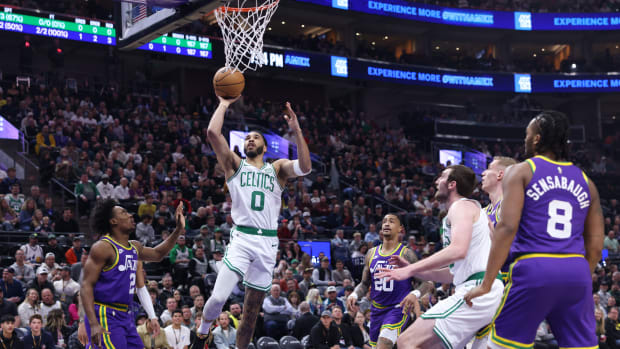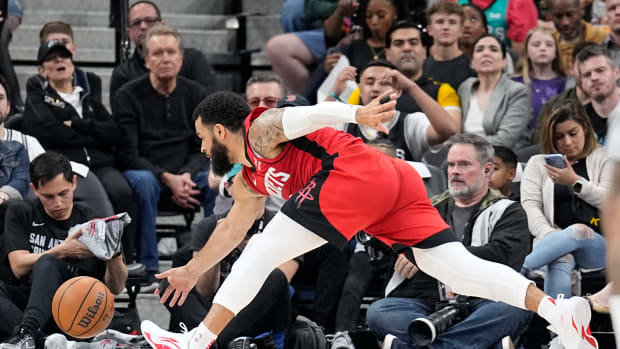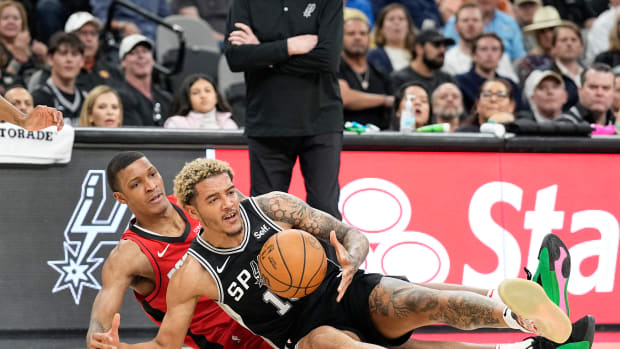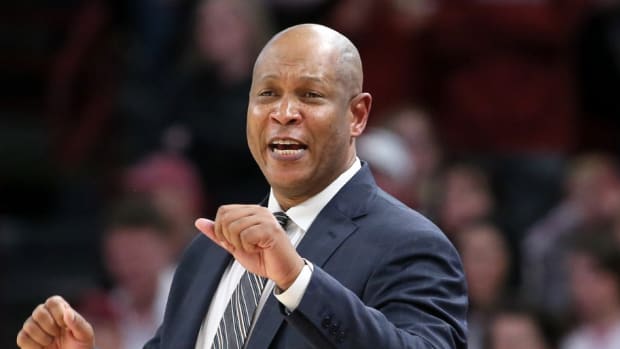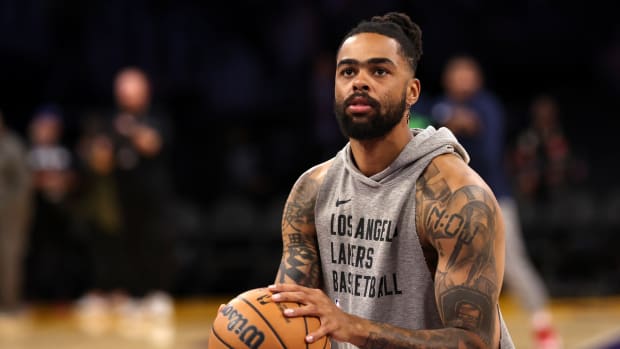After a Disappointing End to an Inspirational Postseason, the Bucks Face a Big Offseason
LAKE BUENA VISTA, Fla. — The Bucks leave here as the NBA postseason’s biggest failure and proudest success, named Most Disappointing and Most Inspiring in your NBA Bubble Yearbook. The Bucks lost early but made history; we will celebrate them in 30 years but not next month.
On Aug. 26, in the wake of Jacob Blake’s shooting in their home state, the Bucks declined to play. On Sept. 8, the Heat sent them home. Both dates define the team, in some way. It would have been a story for the ages if the Bucks won a championship a few weeks after starting a multisport walkout for social justice. But it was a story for the ages anyway. Each Buck—we are talking individuals now, not just the collective that appears on the floor—will carry the walkout around forever. Strangers will thank them. Some people who didn’t understand it in 2020 will get it in 2030. The meaning might evolve over time, as time provides clarity, but they will remain proud.
Somebody wins the NBA championship every year (though we can’t say that for sure this year until the league’s Disney-campus experiment is complete). What the Bucks did is much rarer. Historians will remember them for that—and should.
And yet, they are will also wonder: After showing the courage to do what had never been done, why couldn’t they do what they had done all year?
“Certainly we were in the middle of it,” Bucks coach Mike Budenholzer said, mask on, in a strange neutral-site arena, after the strangest few months in NBA history. “It was significant. But it’s just part of life. It could have helped us. It may have helped us. I know it helped us as humans.”
It is tempting to conflate the walkout with the flameout, to say that the Bucks lost focus after what happened in Kenosha and never got it back. But that doesn’t really check out. The Suns, who missed the playoffs, went 8–0 in the bubble. The NBA-best Bucks went 8–10. Other teams also paused their season; the Bucks were just the first.
“That could have been our rallying point,” Budenholzer said of the walkout. “That could have been the question if we won. I think both things are overstated.”
The Bucks were struggling before the walkout, and they struggled after it in precisely the way they had to fear. This is a great regular-season team that probably needs a roster jolt to win a championship. Reigning MVP Giannis Antetokounmpo said he sprained an ankle in Game 3 against Miami and then resprained it in Game 4. He sat Game 5. But at the time of the first sprain, the Heat were already exposing the Bucks.
Now, fitting for this bizarre year, the Bucks face a massive summer this fall. The Bucks were set to offer Antetokounmpo a mammoth contract extension in July; they now must wait until whenever the league allows it. He talked Tuesday night about enjoying a winning culture in Milwaukee for many years down the road, but we have heard stronger statements than that from players who soon demanded a trade or left via free agency. Nobody can be sure about Antetokounmpo’s future until he either signs an extension or doesn’t.
Any fair analysis of the Bucks must start with this: There is a lot more that is right about this team than is wrong about it. A year ago, the Bucks took a 2–0 conference finals lead on the eventual champion Raptors. This year, they won more regular-season games than anybody else in the NBA, and they managed to win Game 4 and nearly Game 5 against Miami after Antetokounmpo got hurt. They could well bring back the same team next year and win the title. But I wouldn’t recommend it.
These Bucks look a lot like the Cavaliers during LeBron James’s first go-round: A dominant young player quickly led a team into contention until he could no longer hide its flaws or his own. Antetokounmpo, like James, was so dominant in his early 20s that we expected even more than a player of that age should be able to do. He is still just 25.
There is nobody in the NBA like Antetokounmpo, and the poor saps who must face him on the second night of a back-to-back have no chance. But an opponent that gets to focus on him for a seven-game series can slow down the whole team. He is not a great three-point shooter. He makes his teammates better more because of the attention he draws than a direct impact on them. The Heat are very good, but mostly they were tougher, smarter and more balanced than the Bucks. Milwaukee is tenacious but not dynamic. We have seen, in two straight postseasons, that this team can be solved.
The next steps are delicate. During James’s first Cavs run, Cleveland spent wildly and impatiently, desperately convincing itself it was one good player away from a title. The result was a mishmash roster that collapsed when James went to Miami. The Bucks have tried to preserve flexibility while chasing a ring; rather than lock in their roster by signing Malcolm Brogdon to a huge contract, they traded him to Indiana for draft picks. Maybe Brogdon would have made the difference this year. But maybe Milwaukee can package those picks and Eric Bledsoe for somebody better.
Every team in the NBA wants what Milwaukee has: a young, homegrown MVP. That feels like the holy grail, but it’s really just a big step in a long process.
How will Milwaukee look back in this experience? It was, like so much of 2020, jumbled. The Bucks used their season to try to address society. Now they must use their offseason to address their basketball team.































